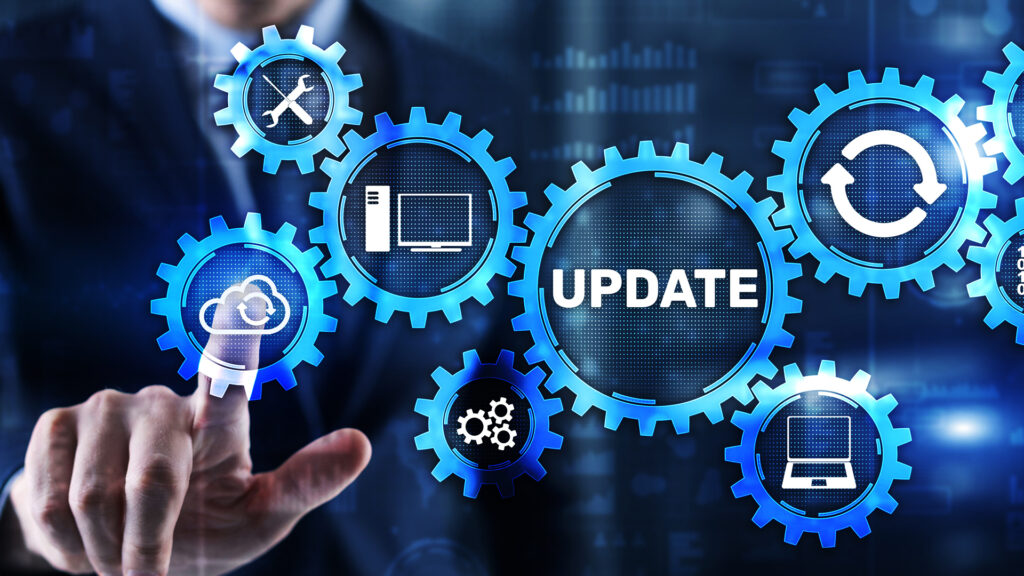itSynergy: Blog

Ready for Anything: Strengthening Your IT Infrastructure for Year-End Demands
As we approach the final quarter of the year, businesses across all industries often face a surge in activity. Whether it’s closing deals, processing data, or ramping up production, the demands on your IT infrastructure can escalate quickly. Ensuring that your systems are robust enough to handle these pressures is crucial to maintaining smooth operations and avoiding costly downtime. In this blog, we’ll examine the key steps you can take to prepare your IT infrastructure for these increased demands.
We understand that the demands on your IT systems can be overwhelming, especially as the year draws to a close. That’s why we proactively manage and optimize our clients’ IT environments year-round, ensuring they’re always ready to handle whatever comes their way. If you’re unsure about the state of your IT infrastructure or simply want expert advice, we’re here to help.
Assessing Current System Performance
The foundation of a resilient IT infrastructure lies in understanding its current state. A thorough assessment of your systems allows you to identify potential weaknesses and areas that need improvement before they become critical issues during peak periods.
Key Areas to Evaluate
– Server Load and Capacity: Servers are the backbone of your IT infrastructure, handling everything from hosting websites to running critical applications. It’s important to regularly review server load and capacity to ensure they can handle increased traffic and workloads without slowing down or crashing. This might involve analyzing current usage patterns and predicting future demands to determine if additional resources are necessary.
– Network Performance: A reliable and fast network is essential for smooth business operations. Network performance should be assessed for any bottlenecks, latency issues, or connectivity problems that could disrupt operations during high-demand periods. Tools that monitor network traffic in real time can help identify and resolve issues before they affect users.
– Data Storage: As businesses grow, so does the volume of data they need to store and manage. Ensuring that your data storage solutions are both sufficient in capacity and optimized for quick access and retrieval is key to maintaining efficiency. This might involve upgrading to faster storage drives, implementing data compression techniques, or expanding your cloud storage capabilities.
Regularly evaluating these areas not only helps prevent unexpected issues but also positions your business to capitalize on opportunities that arise during the busiest times of the year.
Proactive System Upgrades and Maintenance
Once you’ve identified areas of concern, the next logical step is to address them through proactive system upgrades and maintenance. Waiting until a problem arises is risky and can lead to significant disruptions. Proactive measures ensure your IT infrastructure remains robust and capable of supporting your business needs.
Common Upgrades to Consider
– Hardware Enhancements: Over time, hardware components can become outdated or insufficient to meet growing demands. Upgrading server processors, adding more RAM, or investing in faster storage drives can significantly boost system performance. These enhancements ensure that your systems can handle increased workloads without compromising speed or efficiency.
– Software Updates: Keeping your software up-to-date is critical for both performance and security. Outdated software can introduce vulnerabilities and slow down your operations. Regularly updating operating systems, applications, and security programs ensures that your IT environment remains secure and efficient. It’s also worth considering automation tools that can streamline the update process, reducing the likelihood of human error.
– Scalability Improvements: As your business grows, so too should your IT infrastructure. If you anticipate a significant increase in demand, it may be necessary to scale your infrastructure. This could involve adding new servers, leveraging cloud services for additional capacity, or implementing load-balancing solutions to distribute traffic evenly across your network.
By investing in these upgrades and maintenance activities now, you can avoid potential downtime and ensure that your systems are ready to support your business as it grows.
Strengthening Cybersecurity Measures
With increased activity often comes an increased risk of cyber threats. Cybersecurity should be a top priority, especially as businesses become more reliant on digital systems. A robust cybersecurity strategy not only protects your data but also ensures the continued operation of your business during critical periods.
Essential Cybersecurity Steps
– Update Security Protocols: Cyber threats are constantly evolving, and so should your security protocols. Regularly review and update your security policies to align with the latest industry standards. This includes implementing multi-factor authentication, updating firewalls, and ensuring that all devices on your network are secure.
– Employee Training: Human error is one of the most common causes of security breaches. Conducting regular cybersecurity training sessions for your employees can help them recognize and respond to potential threats like phishing attacks. This training should be updated regularly to reflect the latest threats and best practices.
– Backup Systems: Data loss can be catastrophic, especially during critical business periods. Ensure that all critical data is backed up regularly and that these backups are stored securely, either off-site or in the cloud. Regularly testing your backup systems is also crucial to ensure they can be restored quickly in the event of an emergency.
By strengthening your cybersecurity measures, you can protect your business from potential threats and ensure that your operations continue without interruption.
Monitoring and Support
Even with the best preparations, unforeseen issues can still arise. Continuous monitoring and having a support plan in place are essential for quickly addressing any problems that may occur. This not only helps to minimize downtime but also ensures that your business can continue to operate smoothly.
Key Monitoring Practices
– Real-Time Monitoring: Real-time monitoring tools allow you to detect and address any performance issues or security breaches as they happen. These tools provide instant alerts, enabling your IT team to respond quickly and prevent small issues from becoming major problems.
– Support Readiness: Your IT support team should be ready to respond promptly to any issues that arise. This includes having a clear escalation process in place and ensuring that support staff are trained and equipped to handle a wide range of potential problems. Regularly reviewing and updating your support processes can help ensure that your team is prepared for any situation.
We continuously monitor our clients’ systems, ensuring that any issues are detected and resolved before they can impact operations. Our proactive approach means that you can focus on your business, knowing that your IT infrastructure is in capable hands.
Moving Forward with Confidence
As the year draws to a close, the demands on your IT infrastructure will only increase. By taking proactive steps now, you can ensure that your systems are ready to handle whatever comes your way. From assessing current performance to implementing upgrades and strengthening cybersecurity, these preparations are essential for maintaining smooth operations and minimizing the risk of disruptions.
We’ve already implemented many of these strategies for our clients, ensuring their systems are robust, secure, and ready for anything. If you have any concerns or need assistance with your preparations, don’t hesitate to reach out. We’re here to help you navigate the challenges and ensure that your IT infrastructure is ready for whatever comes your way.





